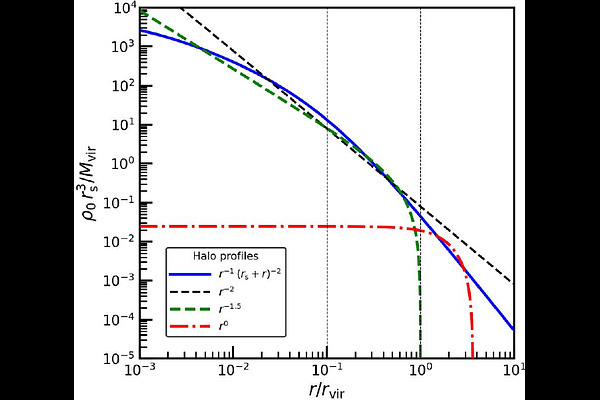Collisionless relaxation to quasi-steady state attractors in cold dark matter halos: origin of the universal NFW profile

Collisionless relaxation to quasi-steady state attractors in cold dark matter halos: origin of the universal NFW profile
Uddipan Banik, Amitava Bhattacharjee
AbstractCollisionless self-gravitating systems such as cold dark matter halos are known to harbor universal density profiles despite the intricate non-linear physics of hierarchical structure formation in the $\Lambda$CDM paradigm. The origin of these attractor states has been a persistent mystery, particularly because the physics of collisionless relaxation is not well understood. To solve this long-standing problem, we develop a self-consistent quasilinear theory in action-angle space for the collisionless relaxation of inhomogeneous, self-gravitating systems by perturbing the governing Vlasov-Poisson equations. We obtain a quasilinear diffusion equation that describes the secular evolution of the mean coarse-grained distribution function $f_0$ of accreted matter in the fluctuating force field of a halo. The diffusion coefficient not only depends on the fluctuation power spectrum but also on the evolving potential of the system, which reflects the self-consistency of the problem. Diffusive heating by an initially cored halo develops an $r^{-1}$ cusp in the density profile of the accreted material, with $r$ the halocentric radius. Subsequent accretion and relaxation around this $r^{-1}$ cusp develops an $r^{-3}$ fall-off, establishing the Navarro-Frenk-White (NFW) density profile, a quasi-steady state attractor of collisionless relaxation that is not particularly sensitive to initial conditions. Given enough time though, the halo tends to Maxwellianize and develop an isothermal sphere profile. We demonstrate for the first time that the universal NFW profile emerges as an attractor solution to a self-consistent theory for collisionless relaxation.